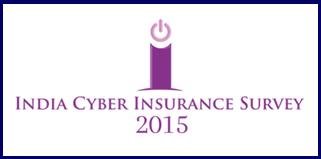Bangalore saw a congregation of enthusiastic domain investors on August 7th and 8th in the second DomainX conference in India, held at Taj WestEnd. There were several international participants and also from across the country demonstrating a growing interest in “Domaineering”.
It is a part of internet history that registering of popular domain names in the initial stages created huge wealth for some smart domain registrants in the early days of internet. However, after the emergence of UDRP and a number of consistent decisions upholding the rights of the trademark owners against domain registrants, a view prevailed that physical society money power had prevailed over the Netizens and it was unsafe to register any domain name which had a value.
Over a period however a fine distinction has developed between domain names registered in bad faith and likely to cause “consumer confusion” with popular brands and/or meant to prevent the legitimate brand owner from registering his own domain name which were identified as “Cyber Squatting” and innovatively constructed domain names with a potential to be used for business as products that can be created and also traded for profit which are the subject matter of domaineering.
Understanding this difference between “Cyber Squatting” and “Domaineering” is an important step towards considering any investment in domain names.
Naavi was a pioneer in the field of finding solutions to resolving of domain name disputes and came up with two important suggestions way back in 2002 to create
a) Trusted third party disclaimer system (www.lookalikes.in)
b) Economical and legally sustainable online arbitration system (www.arbitration.in)
However the market at that time did not appear to be ripe to accept these suggestions since the concepts remained at pilot stage.
It appears to the credit of some innovative business minds some of whom were present in the DomainX 2015 conference that there is now a growing interest in identifying “Domain Names” as a class of investment which can be traded. Case studies of how some of the participants made money in buying and selling domain names shared during the conference made one sit up and take notice of the opportunities.
At the end of the conference one could recognize that many participants went back with a feeling that they too should start looking at this class of investment.
It was therefore a successful conference which met with its objectives of creating interest in the field of “Domaineering”.
The undersigned participated in the conference as a Cyber Law Educationist in the legal panel and shared some of his views along with others. The objective of the panel discussion was however limited to the discussion of UDRP and hence all relevant legal issues didnot come for detailed discussion.
The undersigned who is also an ex Merchant Banker and a long time Financial products Marketer, did have many interesting observations arising out of the conference on the concept of “Domain Name as a class of investments”, “Trading of Domain Names”, “Need for Government Policy Changes”, “Protection of Domain Name investors in India”, “Foreign Exchange and Tax implications of Domaineering” etc. These will be explored further in future articles.
At a corner of my mind is also a concern that like in the case of “Bitcoins”, the field of domaineering may have to fight the prospect of keeping its activities on the right side of law or face a legal backlash. Another concern is how the changes in technology in the form of increasing influence that Mobiles are having on our internet activity could affect the future prospect of domaineering.
At the same time, the undersigned also sees a better prospect of making services such as lookalikes.in and ceac fortified arbitration.in more relevant if suitable technology partners emerge besides the additional prospects arising for services like Cyber-notice.com.
Also the need for Cyber Insurance industry to be pushed to debate the status of domain names as an asset class both for the users and investors has emerged.
We will devote some of the next few articles here to discuss these issues for the general information of the public and to create a platform for further debate.
I invite the suggestions of the readers and their comments in this regard.
Naavi







